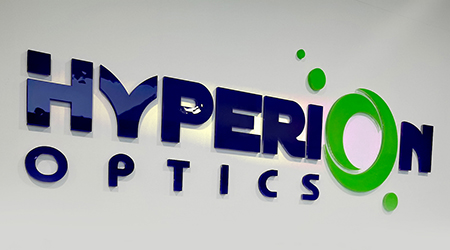With the development of infrared detector technology and application requirements, the use of MWIR lenses is also increasing. Due to the refrigerating mechanism used by the medium wave, the efficiency of the cold diaphragm can reach 100%, and the definition of the photoelectric conversion image, the signal-to-noise ratio, the minimum resolution temperature difference and other evaluation indicators will be significantly improved compared with the uncooled long-wave imaging.
The medium and long wave of MWIR lens is mainly temperature thermal imaging, which converts the spatial distribution of infrared radiation generated by the temperature and emissivity of the scene into a video image. The difference in medium and long wave imaging is that the temperature is low to close to normal temperature and suitable for long wave detection, while the temperature is slightly higher. It is suitable for detection with medium wave.
Medium-wave infrared imaging has the characteristics of good concealment, can work day and night, and has a strong ability to penetrate smoke and dust at the same time, which is especially suitable for long-distance remote monitoring.
Silicon is the most commonly used material in the field of mid-wave infrared optics systems (3-5um). The overall trend requires optical systems to be small in size, light in weight, and simple in structure. Usually, aspheric or even diffractive surfaces are used on silicon lenses; silicon aspheric and diffraction Surfaces have always been difficult to process. The reason is that the physical properties of silicon materials are brittle and hard, and problems such as chipping are often prone to occur during processing. Surface finish and surface accuracy are also difficult to control; at the same time, the processing tools are very easy to wear and high tool costs. It also makes the silicon aspheric surface and diffractive surface lens very expensive, so that the silicon aspheric surface and diffractive surface have been stuck in the stage of a small number of samples and cannot be used in large quantities. The existing processing equipment and technology of Hyperion Optics has overcome the technology of processing diffraction rings on the aspheric surface of silicon, enabling customers to reduce at least one lens in the original design, which can greatly reduce the cost and volume, and facilitate subsequent design.
In the application of medium wave, the continuous zoom lens has a broad application prospect, which can detect different fields of view, and the medium wave imaging generally uses a refrigerated movement, the image quality will be very good, and it is widely used in remote accurate monitoring.
 Call us on:
Call us on:  Email us:
Email us:  R&D Center: 9B-4F 401,No.1 Qingnian Road Liando U Valley,Yuhua International Wisdom Valley, Nanjing, 210039 China
R&D Center: 9B-4F 401,No.1 Qingnian Road Liando U Valley,Yuhua International Wisdom Valley, Nanjing, 210039 China









 English
English  cn
cn  de
de  es
es  fr
fr 


